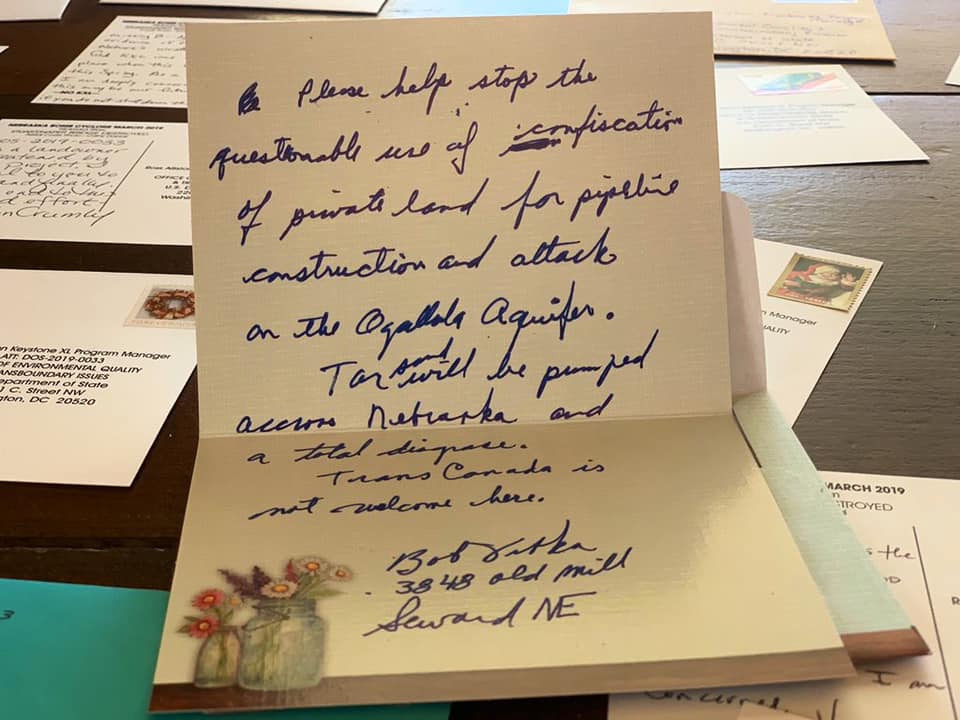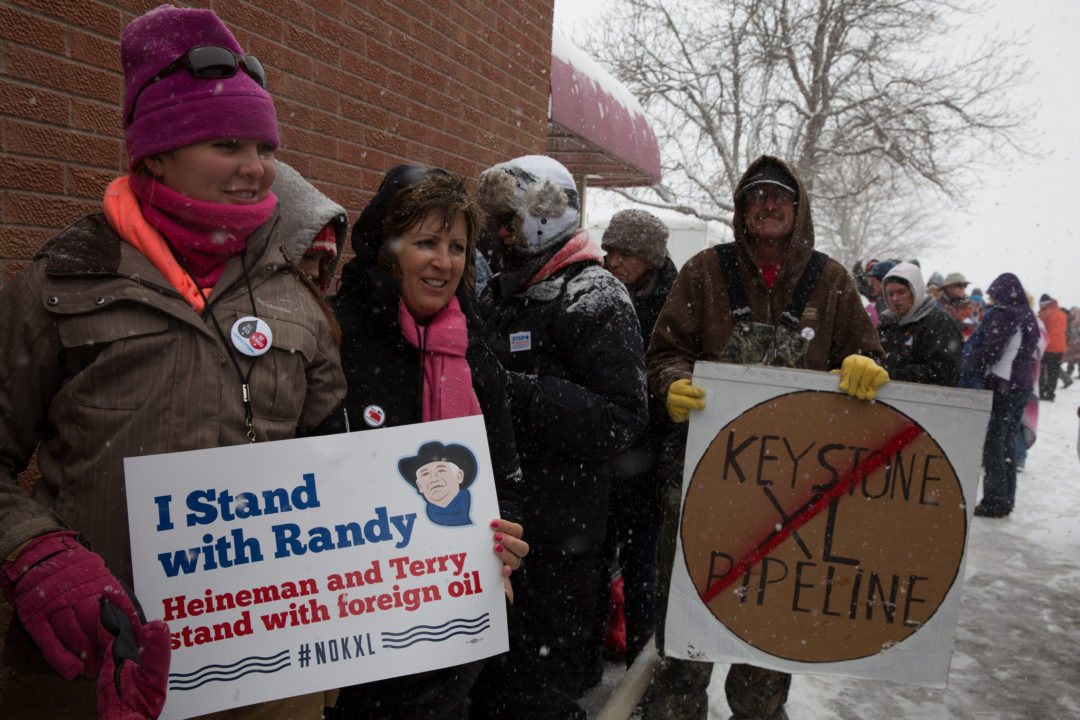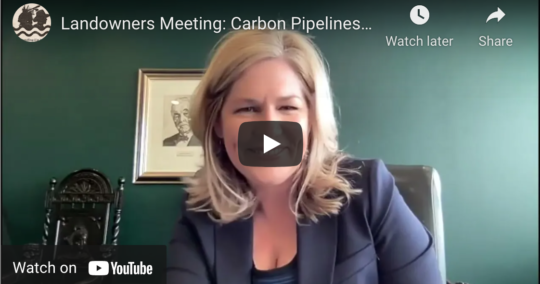

Along with the more than 7,500 public comments from citizens submitted by Bold Nebraska to the State Department’s draft environmental review for the proposed Keystone XL pipeline — including hundreds of handwritten letters and postcards sent by Nebraska farmers and ranchers who are landowners in the path of the pipeline — Bold signed onto a more substantial comment that was authored by the attorneys who are representing Bold, Nebraska and Montana landowners, and environmental groups suing the Trump administration over its illegal approval of the KXL project.
Key issues raised in the organizational comment included:
- The State Department’s analysis of oil spills is incomplete and misleading. (See Bold’s “History of Keystone Pipeline Spills“)
- The Draft SEIS must fully analyze the historic flooding across the Midwestern United States in 2019. (See Bold’s coverage of the floods, and coverage of flooding on KXL route.)
- The Draft SEIS fails to adequately address the adverse impacts of Keystone XL on wildlife and protected species, including harm from oil spills.
- The Draft SEIS fails to fully address the adverse impacts to listed species along the Mainline Alternative Route (MAR) in Nebraska and relies on inadequate conservation measures.
- Keystone XL will have significant climate change impacts, which the Draft SEIS fails to properly disclose and analyze.
- The Draft SEIS’s climate analysis is “disassociated from climate science,” and “misleads the public about Keystone XL’s emissions.”
- Greenhouse gas emissions from operation are inexplicably lower for the new
route through Nebraska.
View the full comment submitted by Bold, Sierra Club, Natural Resources Defense Council, Center for Biological Diversity, Friends of the Earth and Northern Plains Resource Council:
The state of Montana, and Gov. Steve Bullock also submitted comments into the State Dept. that voiced grave concerns about the project:
According to the Missoula Current: “Bullock’s primary concern was that the federal analysis of the threat of potential oil spills to Montana’s water supplies was inadequate, based on the damage to the Yellowstone River caused by oil spills in 2011 and 2015. Those and other spills weren’t included in the EIS analysis.
State experts also objected to the incomplete analysis of threats to cultural resources and a lack of proper consultation with Montana’s tribes. They also asked that more care be taken to avoid drilling activities that would disturb fish or disrupt spawning, particularly for the threatened pallid sturgeon around Fort Peck…
To provide some independent data, Bullock also sent along a DNRC engineering study showing that the Keystone XL pipeline project could affect eastern Montana’s water infrastructure, and a spill, such as the one currently polluting a wetland in eastern North Dakota, could contaminate irrigation and drinking water supplies.
While the DNRC study found that the proposed pipeline meets federal pipeline safety standards, similar to the current Keystone pipeline, it identified certain sites along the route where a spill would be more likely to pollute water quality.”
View the full comments from the state of Montana for the State Dept.’s KXL environmental review:
State of Montana Keystone XL DSEIS Comment







